Hello everyone, and welcome to the first post of Peculiar Primates! Our research at the University of Arkansas incorporates a lot of different primates, so we want to clue you in to some of the cool, weird, and awesome species that we study. Of course, we’ll cover the more popular and widely known oddities like the proboscis monkey (Nasalis larvatus) and the aye-aye (Daubentonia madagascariensis), but we also want to tell you about some of the other funny looking, interesting, and unique primates that are less popular. No matter how weird it gets, we promise we’re not making any of this up. As certified biological anthropologists, we can confidently say that we know what we’re talking about when it comes to monkey stuff (and monkeying around). We’ll even provide citations, so you can check our facts. We hope you’ll do further investigation on your own. If nothing else, we hope you enjoy the cute primate pictures and learn some new facts to incorporate into awkward small talk.
We’re going to kick off this series with a small, regal, South American monkey called the emperor tamarin (species name Saguinus imperator). This little fella is a member of the family Callitrichidae, which includes marmosets and tamarins, and has some pretty interesting features (1). Callitrichids are small primates that have only eight total molar teeth rather than the twelve found in most humans and many other primate groups (1). This family also shares a strange birthing pattern among primates: Callitrichids usually birth twins or triplets (1,2). Most primates, including humans, usually have one offspring at a time. Can you imagine having two or three kids to protect and feed each breeding season? Well, the father emperor tamarins can, so they usually help out with the family stuff (this is a relatively rare trait for primates). The offspring hitch rides on various group members for about 70 days after birth (2). Talk about commitment, am I right?
Most tamarins have a habit of rocking some pretty weird hair-dos (some of which we may feature in later posts), but the emperor tamarin has a lovely mustache that is said to resemble Kaiser Wilhelm II or Emperor Franz Joseph of Austria (1), hence their aptly descriptive name. We’ve provided a picture of these men and a few other potential (historical) celebrity look-alikes for your viewing pleasure. One subspecies of emperor tamarin has a mustache and a black chin (Saguinus imperator imperator), while the other sports a full beard with white hair extending to the chin (Saguinus imperator subgrisescens) (2).
Kaiser Wilhelm II of Germany – Photo from The Famous People
Emperor Franz Joseph of Austria – Photo from Private Prague Guide
Emperor Meiji of Japan – Photo from Encyclopedia Britannica
Emperor Yongle of China – Photo from Epic World History
Emperor tamarins can be found primarily in the Amazon rainforests of Peru and Bolivia (1). They eat mostly fruit, but when fruit is not as widely available, they’ll eat sugary flower nectar (1,3). These primates make chirping sounds to communicate with one another (2). You know what it sounds like when you sit on your porch in the morning and listen to the birds? Think that, but with stellar facial hair.
While not endangered like many other primate groups, deforestation and the exotic pet trade are threats to the emperor tamarin habitat and livelihood. Protected areas such as the Rio Acre Ecological Station and Manu National Park help preserve the emperor tamarin populations existing today (3).
Emperor tamarin walking through the canopy – Photo from ARKive
Any questions, or want further information? Feel free to check out the references listed below or email Ashly Romero at anromero@uark.edu.
References:
- Fleagle, JG (2013). Primate Adaptation and Evolution. Academic Press: USA.
- Arkive – Emperor tamarin. Retrieved from http://www.arkive.org/emperor-tamarin/saguinus-imperator/image-G67816.html in May 2018.
- IUCN Red List – Saguinus imperator. Retrieved from http://www.iucnredlist.org/details/39948/0 in May 2018.
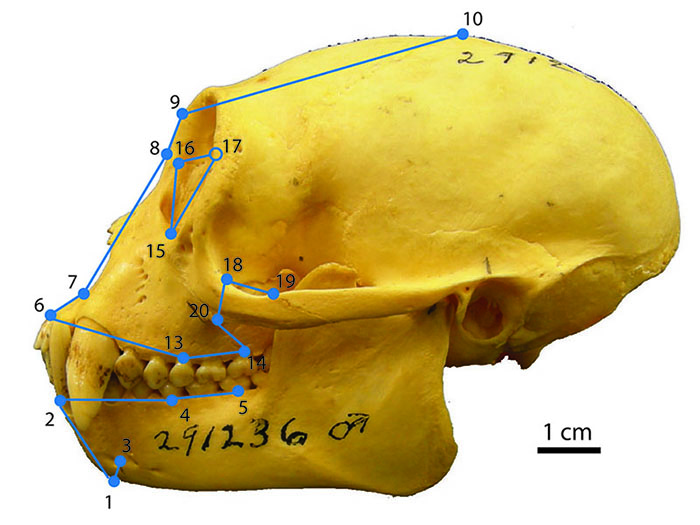
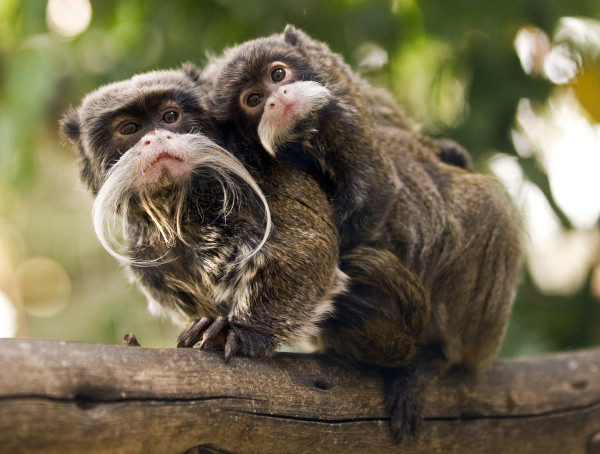
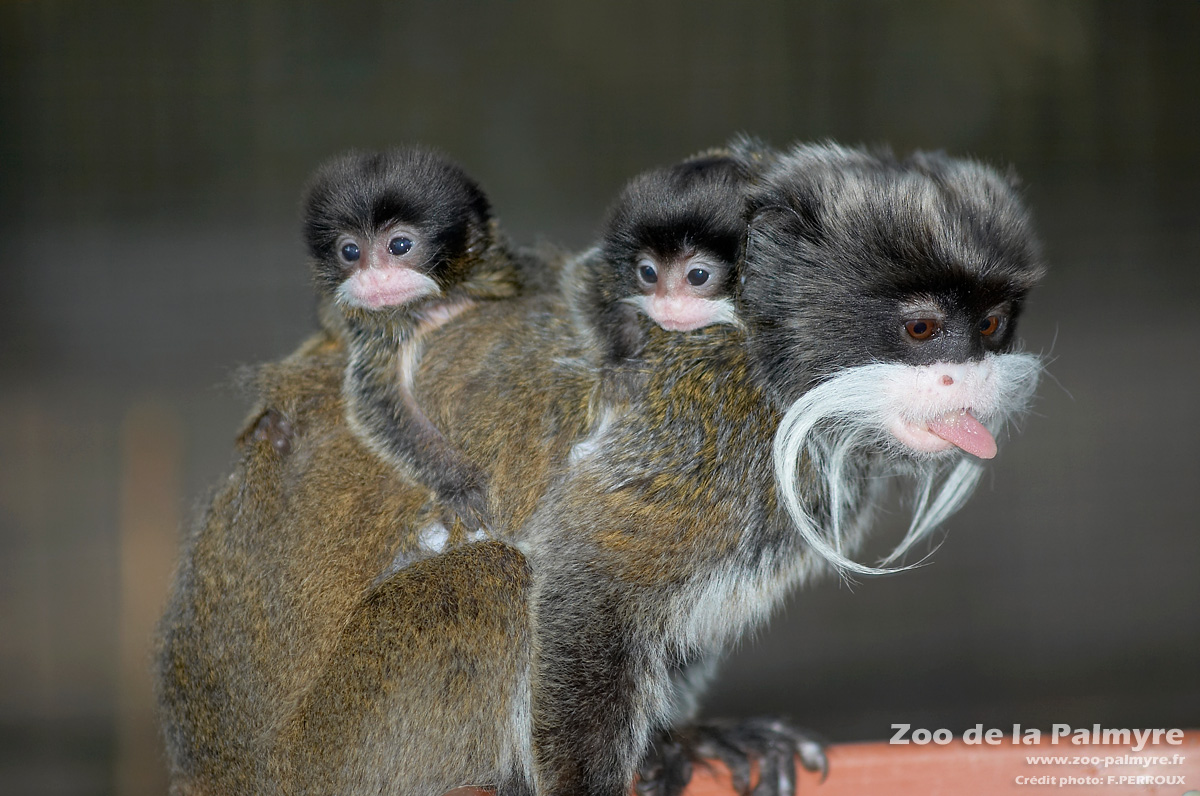

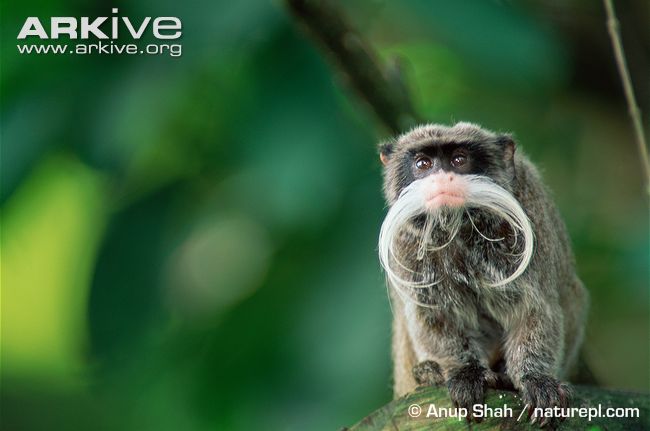




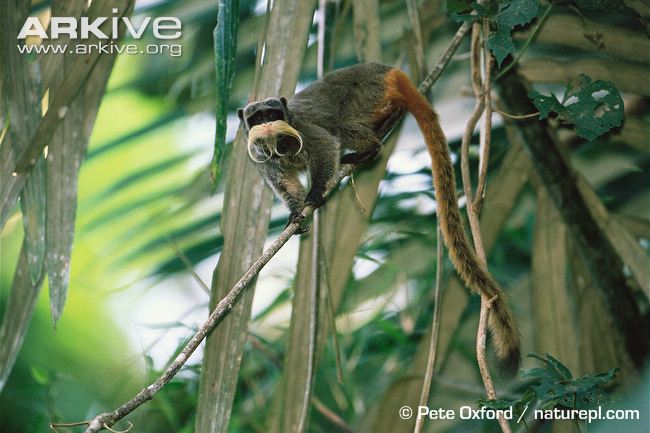
0 Comments